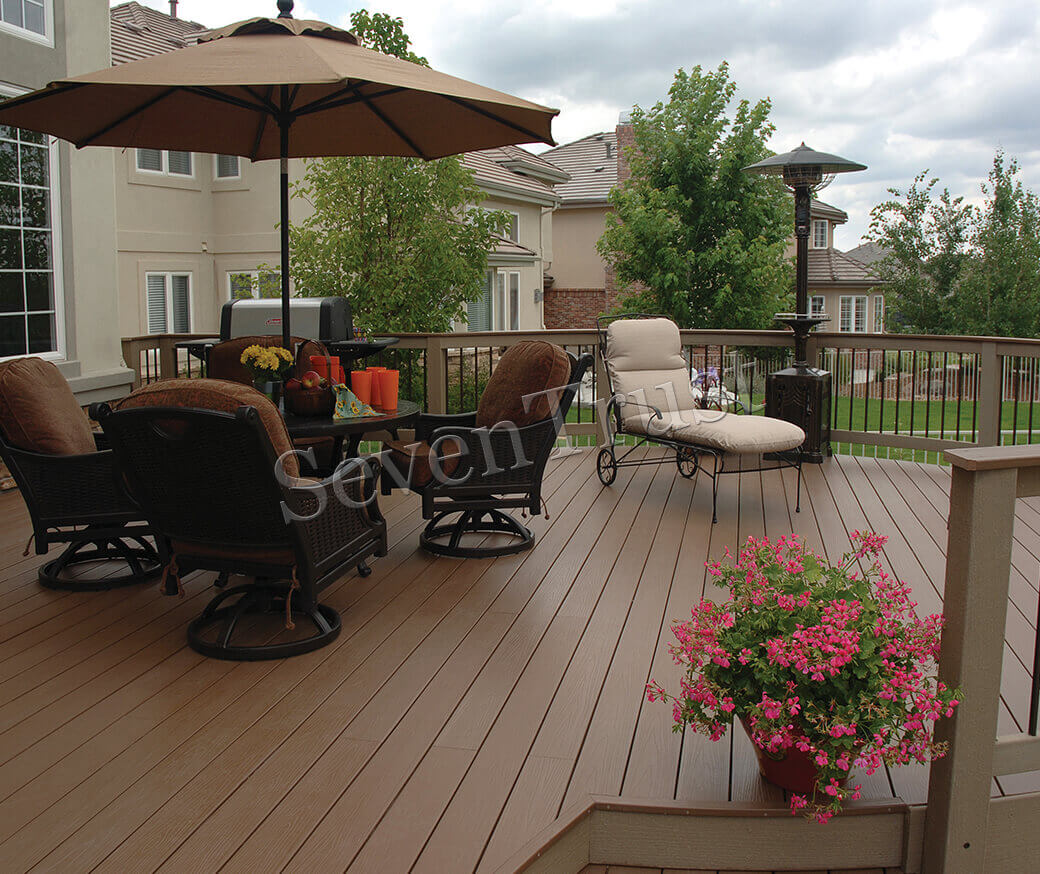Significance of developing ultra-high-fill wood-plastic composite materials
Friday, July 21, 2023In order to make full use of the advantages of wood fiber regeneration, carbon neutrality, low cost and abundant sources, the purpose of reducing the production cost of plastic wood can be achieved by increasing the wood fiber content, thereby improving its competitiveness in the market and environmental friendliness. The commercially available extruded WPC can be filled up to 70wt.%. However, this kind of WPC still contains up to 30wt.% thermoplastic polymer, which inevitably leads to weaker rigidity, easy creep and high thermal expansion coefficient. Such problems seriously restrict the application of plastic wood in fields with high dimensional stability requirements, especially when plastic wood is used as outdoor decking, wall panels and other building materials, it will creep under the influence of long-term load and thermal e xpansion and cooling due to temperature changes Shrinkage, which seriously affects the durability of plastic wood in the long-term use process. On the existing basis, it is an effective solution to continue to increase the content of wood fiber. High content of wood fiber not only enhances the visual and tactile experience of consumers, but also brings the characteristics of wood moisture absorption and analysis, which is beneficial to further broaden the wood industry. The application of plastic composite materials is of great significance.

The critical wood powder content of wood depends on the processing method. Injection molding requires high fluidity of the plastic wood melt, and requires higher temperature and pressure than extrusion molding and thermocompression molding, so its wood fiber content is often lower. If it is more than 60wt.%, high fluidity is not required for thermocompression molding. It has been reported in the literature that the preparation of plastic wood with a filling content of more than 84wt.% can be achieved (wood-based panels prepared with various thermosetting adhesives are not included in the discussion), but hot pressing There is no unidirectional flow in the process, the wood fibers and the polymer matrix show random orientation, and the poor mixing and plasticizing process inevitably leads to problems such as poor uniformity and more defects, which are often accompanied by weaker mechanical properties and Long-term durability, and its production is even more difficult to achieve continuous. Extrusion molding is currently the most commonly used processing method in the plastic wood industry. Compared with other methods, extrusion molding has high production efficiency, continuous production, uniform mixing, and good plasticizing effect. With a certain orientation, a better reinforcement effect can be obtained in the direction of extrusion. However, it is very difficult to further increase the wood fiber content of extruded WPC, which is mainly limited by the high viscosity of the WPC melt under the high wood fiber filling system, which makes the WPC melt flow unstable during the extrusion process. Even the melt fracture phenomenon, and the limited polymer matrix is difficult to completely cover the wood fiber, the existing common processes and equipment are difficult to continuously and stably prepare high-fill plastic wood. In addition, the understanding of the solid-like rheological behavior of high-fill WPC melts is very limited, and there is a lack of systematic rheological theory, which is also one of the important reasons that limit the development of high-fill WPC. However, wood fibers have the potential to form a stable structure through interactions such as ionic bonds, hydrogen bonds, van der Waals forces, and physical entanglements. Therefore, selecting appropriate polymer matrix and additives and controlling the processing technology can theoretically further Increase the filling amount of plastic wood.

In order to fully reduce costs, increase environmental friendliness and obtain a good woody feel, some studies have used poplar fiber and moso bamboo fiber as raw materials to prepare ultra-highly filled polypropylene-based wood-plastic composites (UH-WPC) by extrusion molding. Based on the significant reduction in the content of polypropylene matrix, this paper comparatively analyzes the effects of filling amount and wood fiber type on the high and low temperature mechanical properties, high and low temperature creep properties, thermal expansion properties, dimensional stability and water absorption properties of UH-WPC. The results show that as the filling content increases from 75% to 90%, the linear thermal expansion coefficient decreases significantly, and the creep strain gradually decreases and increases at 90%; the tensile modulus and flexural modulus increase with the filling content It increases and then decreases at 90%; the tensile strength, bending strength and impact strength gradually decrease with the increase of filling amount; UH-plastic wood has higher tensile and bending properties at low temperature -30°C, and higher temperature at 60°C C has better impact toughness. Changes in temperature, humidity, and moisture content all lead to dimensional changes in UH-WPC, among which the dimensional change rate in the thickness direction is the largest, followed by the width direction, and the length direction is the smallest, showing obvious anisotropy; the humidity has a stable effect on the size of UH-WPC. The effect of temperature is much greater than that of temperature. The overall performance of poplar-based UH-plastic wood is better than that of moso bamboo-based UH-plastic wood, which is related to the larger aspect ratio and good interface bonding of poplar wood fibers. The research on UH-WPC provides a theoretical basis for reducing the production cost of WPC and broadening its application fields.